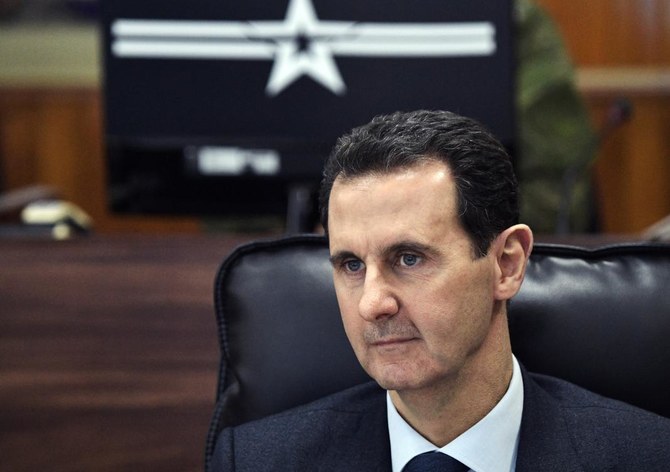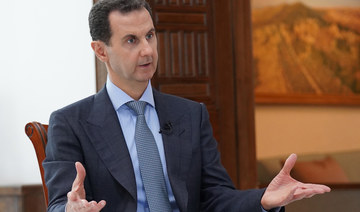BEIRUT: The Trump Administration imposed sanctions Wednesday on entities and individuals in Syria as part of Washington’s pressure campaign against President Bashar Assad and his inner circle.
The sanctions came a day after intense clashes in southern Syria broke out between Russia-backed Syrian troops and local fighters who belong to the minority Druze sect, killing and wounding dozens. The sanctions were not related to the fighting in southern Syria.
The Treasury Department and State Department sanctions are the result of legislation known as the Caesar Syria Civilian Protection Act, named after the pseudonym of a Syrian policeman who turned over photographs of thousands of victims of torture by the Assad government.
Among those sanctioned Wednesday was the Syrian army’s Russian-backed 5th Corps that was established during the country’s conflict that started in March 2011. The 5th Corps includes rebels who later paid allegiance to Assad’s government.
The State Department said it is sanctioning 5th Corps commander Maj. Gen. Milad Jedid “for his involvement in the obstruction, disruption, or prevention of a cease-fire in Syria.”
The sanctions also included two sisters of Yasser Ibrahim, who is suspected of obstructing a political solution to the Syrian conflict and using his networks across the Middle East and beyond to cut deals to enrich Assad.
*****
READ MORE: Syrians dread impact of Caesar Act sanctions aimed at Assad
Caesar Act sends Syria’s Bashar Assad a stark reality check
*****
“The Ibrahim family, led by Yasser Ibrahim, acts as a front for Bashar Assad and his wife Asma Al-Akhras,” Secretary of State Mike Pompeo said. The State Department identified the sisters as Nasreen and Rana.
The US began implementing the Caesar Act in June with a raft of economic and travel sanctions for human rights abuses and blocking a settlement of the country’s bloody nine-year conflict.
Sanctions imposed earlier this year included Assad and his wife and their eldest son, Hafez, as well as members of the extended Assad family, senior military leaders and business executives. Many of those on the list were already subject to US sanctions, but the penalties also target non-Syrians who do business with them.
The new wave of sanctions came as opposition activists reported clashes in southern Syria between the 5th Corps and local fighters who belong to the minority Druze sect.
The Britain-based Syrian Observatory for Human Rights, an opposition war monitor, said the fighting that broke out Tuesday in Sweida province left 16 Druze fighters and 12 members of the 5th Corps dead. It added that dozens were wounded on both sides.
The Observatory said the situation was relatively calm in the province Wednesday.
The Suwayda 24, an activist collective in Sweida, said a funeral was held Wednesday in the provincial capital, also called Sweida, for 15 fighters killed the day before.
It said the fighting broke out on Tuesday when local fighters attacked the 5th Corps in the nearby village of Qaraya to force them out of agricultural lands they had entered earlier.






















